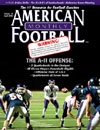AMERICAN FOOTBALL MONTHLY THE #1 RESOURCE FOR FOOTBALL COACHES
Article CategoriesAFM Magazine
|
Boise State\'s Defensive Line - Teaching Progressionby: Pete KwiatkowskiDefensive Line Coach, Boise State © More from this issue At Boise State, we break down our teaching progression for the defensive line into three distinct areas: knowledge, fundamentals and effort. Knowledge consists of stance, alignment and assignment. Knowledge is a mental emphasis that will be covered in meetings and players will process it pre-snap. Fundamentals include keys, get off, block protection, footwork, block releases, escape and pass rush. In this article I will concentrate on general knowledge, get offs and block protection and effort. There are two keys: 1. MAN KEY 2. BALL KEY Keys are a critical fundamental for D-linemen. We have to train our eyes to be disciplined so we can react and explode decisively. • We cannot react to what we don’t see. • We cannot hit what we don’t see. • Do not let your eyes wan....The full article can only be seen by subscribers. Subscribe today!
|
|
|||||||
| HOME |
MAGAZINE |
SUBSCRIBE | ONLINE COLUMNISTS | COACHING VIDEOS |
Copyright 2025, AmericanFootballMonthly.com
All Rights Reserved





